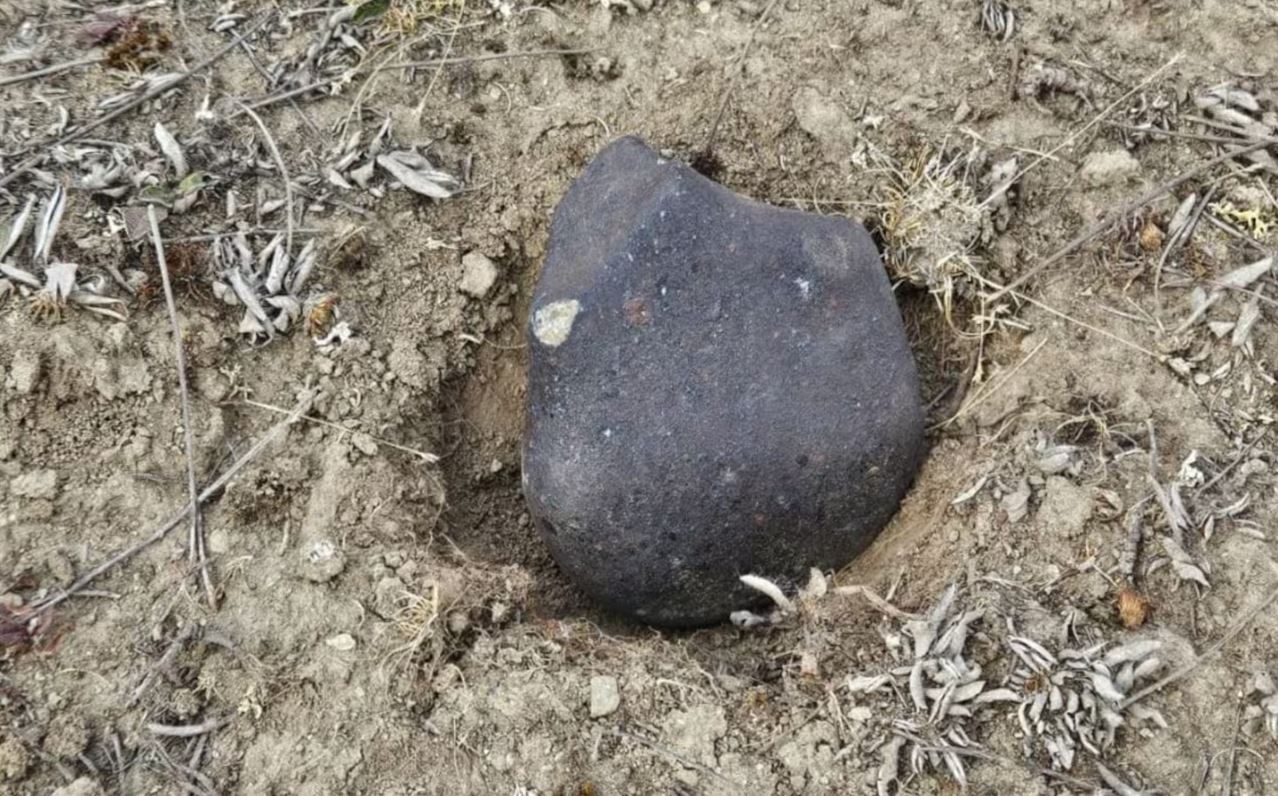
And a fragment or fragments of the space rock spotted by hundreds of Kiwis around 6.35pm last night may now be lying somewhere in the North Island, prompting a plea from meteorite hunters for security and dashcam footage.
"It felt like an earthquake, followed by a shockwave", wrote a farmer from Maxwell, west of Whanganui, on Kapiti Coast/Horowhenua’s Beach FM 106.3 Facebook page.
"I didn’t see the fireball - but felt the explosion and shockwave, as did my hubby. [It was] the loudest explosion we have ever heard, felt the earth move … and there was a sudden weird wind momentarily straight after the event."
The woman was among up to 50 to report what they’d seen or heard to Fireballs Aotearoa, a collaboration between members of the public, schools, universities, observatories and the Royal Astronomical Society of New Zealand to recover freshly fallen meteorites, Fireballs meteorite expert Daniel Burgin said.
Hundreds more had written on various Facebook forums that they’d seen the meteor, with eyewitness reports from Nelson to Auckland, Burgin said.
"The reports we’re seeing are consistent with a meteor entering the atmosphere, and based on reports we think it was centred somewhere between Taupō and Taranaki."
Even better, others had reported hearing a boom, he said.
"[That’s] the exciting thing, that not only are these reports describing a meteor shooting across the sky - it’s a white light moving really quickly - but a few seconds later, particularly in the Whanganui area, there’s reports of a loud boom.
"So this would be the rock fragmenting."
That meant a meteorite - the name for a solid piece of space debris from an object such as an asteroid, comet or meteoroid that survives its passage through the atmosphere to reach Earth - could’ve landed somewhere in the North Island.
"That boom is what happens as the meteor enters the atmosphere really fast, 10s of kilometres per second. And then as it’s heating up - as the atmosphere gets thicker - sometimes that pressure gets too much, and the rock fragments … and that pressure is so big it sends out a shockwave.
"That’s what that boom is."
Although he couldn’t be sure of the meteor’s size, based on eyewitness reports, and given there was a boom, it must’ve been "decently big".
"I’d imagine it would’ve been bigger than your fist, if it was large enough to come through [the atmosphere].
"We need security camera footage because that’s going to show us that trajectory really well, and then we can assess where it’s come from within the solar system, and the speed at which had entered. And that would tell us more about the size."
Because witness reports were so varied they’re weren’t yet sure of the extra-terrestrial arrival’s trajectory, Burgin said.
"But somewhere between the Taupō and Taranaki area is where we think is most likely."
Complicating things, an aircraft was leaving a vapor trail at the same time the meteor’s smoke trail was seen streaking across the sky.
"So we’re getting multiple reports coming in of both the smoke trail left by the fireball and the aircraft contrail. It’s a bit of a bugger they happened at the same time actually."
Fireballs’ camera network only worked at night, making their plea for Kiwis’ footage especially vital.
"We really need people across the North Island to urgently check their security camera footage, dash cam footage, basically anything that could help us assess whether there’s a meteorite now sitting somewhere in the North Island.
"Our best way of having any luck at finding it is the public. This is citizen science, essentially we’re relying on the public to provide data for us."
Fireballs Aotearoa struck the space junkie jackpot last week when volunteer searcher Jack Weterings spotted a meteorite poking out of the ground on Crown land in the South Island’s Mackenzie Country.
The country’s 10th meteorite had entered the Earth’s atmosphere at a speed of 50 to 60 kilometres a second on March 13, with the rock found before volunteer searchers had even officially begun their hunt.
"We found the bastard", Fireballs Aotearoa citizen scientist Steve Wyn-Harris told RNZ, praising not only search volunteers, but Fireballs’ cameras for allowing the "maths and physics to be done to know where to search".
The 800 gram meteorite has been sent to Otago University for tests to discover its origins, Burgin said.
"It’s looking like what we call an ordinary chondrite", he said of the rock made up of "material that makes the solar system".
"It’s a really lame name to give a rock, but it’s a type of material that’s 4.5 billion years old."

They could also come from other planets, such as Mars, or the Moon, Burgin said.
"So these can have a very varied composition, and can be really rare sometimes, but provide so much insight into the way planets form, the Solar System formed, whether there’s life out there.
"Finding these rocks is so valuable to space science."
Two to four meteorites were expected to land somewhere in New Zealand each year, with night-time entries now hopefully picked up by Fireballs’ freshly set-up network of cameras.
"Finally we’re able to track these outer space visitors. We spend all our time on Earth and we don’t often get to think about outer space, and then every now and then a rock from out there comes and shoots past.
"And we get to see that. It’s a reminder that space is out there - and that just gets people excited."
* If you witnessed the meteor or - even better - have footage of it, send your report to www.fireballs.nz/report
By Cherie Howie












